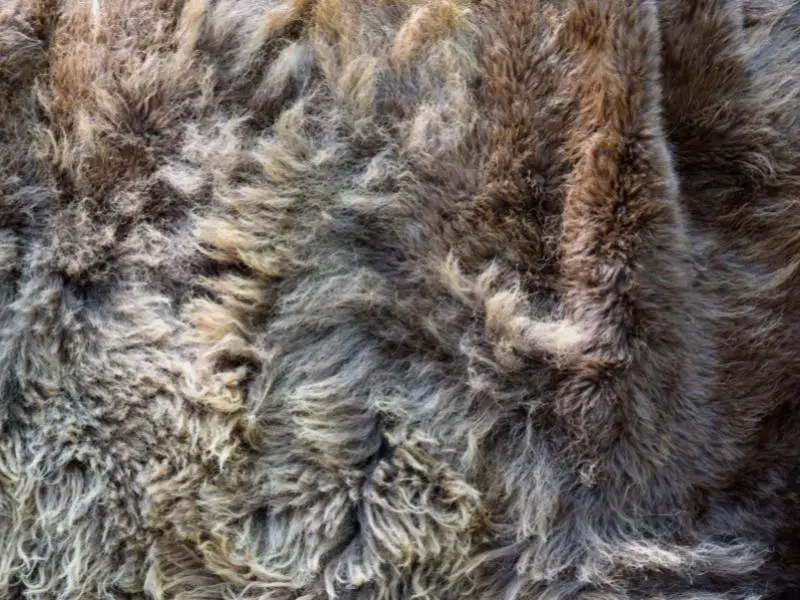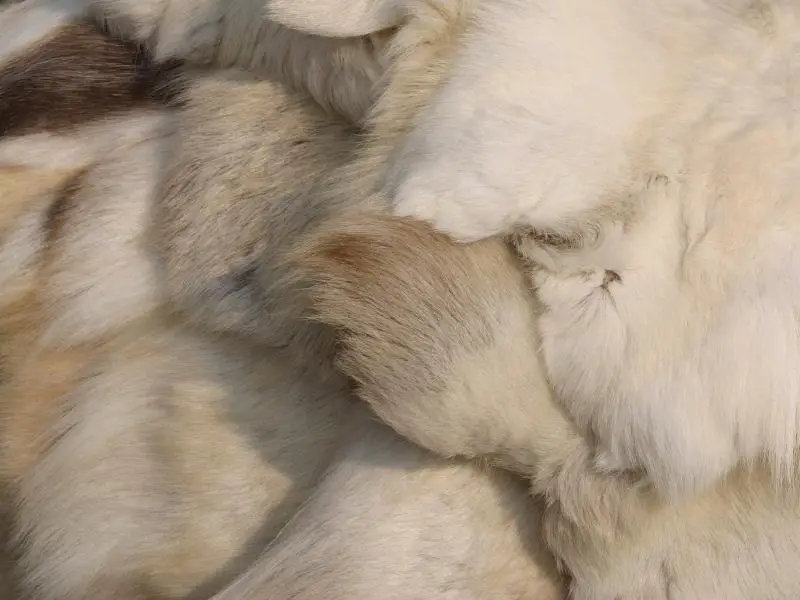Twitchy noses and fluffy cottontails aren’t the only things rabbits have going for them. Wondered if breeding rabbits could bring in a profit? You can, and selling a rabbit’s pelt is just one of the ways you can make a profit from raising rabbits.
So how much do rabbit pelts sell for?
Rabbit pelts sell in a price range from about $1.50 to $100.00 per pelt. There are a few factors to consider when selling rabbit pelts like the rabbit’s breed, age, fur color, hide’s size, dyed or patterned fur, and the tanner’s skill. All these factors increase or decrease the selling price of the fur pelts.
If you are considering selling rabbit pelts and aren’t sure about the demand and market for rabbit skins, this guide is perfect for you.
Are Rabbit Pelts Profitable?
Although rabbit pelts are not as popular or durable as furs like those of the mink or fox, there is a market for rabbit skins.
Today, it’s important to consider that there are many synthetic fibers and imitation furs, which has caused a decrease in the genuine fur market in the United States. The whole fur trade industry has been experiencing a decline since the 1940s.
Certain breeds of rabbits have pelts that are more profitable, such as the Rex rabbit (the fur is soft, and the leather is good to work with).
The Satin rabbit is considered one of the most beautiful rabbit breeds as its fur has a translucent sheen, making the pelt popular.
There are other ways to make extra money from breeding rabbits: selling and marketing the byproducts of rabbits.
Let’s take a closer look at some of these more profitable options:
Selling Rabbit Fur
A rabbit’s fur can be sheared or hand-plucked from long-haired rabbits (such as the Angora rabbit). The wool or yarn from Angora rabbits can be sold for approximately $7 per ounce, and based on the breed of rabbit and condition of the fur, this can go up to $16.00 or more.
You can sell your rabbit fur to:
- Crafters
- Flea markets
- Yarn shops
- Fiber artists
Selling Rabbit Manure Fertilizer
Bunny honey or rabbit manure is an excellent fertilizer, as it’s rich in nitrogen and phosphorus. Rabbit manure can be used directly on plants since it doesn’t burn the vegetation.
A great selling point is that it has four times more nutrients than cow or horse manure and is twice as rich as chicken manure.
Aged manure that contains worms will sell for an even greater profit (approximately $45.00 for a 40-pound bag), depending on your location and the demand for manure.
You can sell your bunny honey to:
- Local farmers
- Gardeners
- Landscaping companies
Selling Rabbit Meat
Rabbit meat is a delicacy and can be found on many menus today, and its popularity is growing. On average, rabbit meat sells for about $6.00 per pound.
Rabbit meat can be sold to:
- Farmers markets
- Grocery stores
- Commercial dog food companies
- High-end or local restaurants
How Much Can I Sell Rabbit Pelts For?

A rabbit pelt can bring in about $1.50 to $100.00. The amount you can sell the hides for depends on various factors.
Let’s take a closer look at a few of these factors:
The Breed of the Rabbit
Different rabbit breeds have different qualities and types of fur.
Certain breeds are more prevalent in the rabbit pelt business, such as the Chinchilla Rex and the Satin breed.
Some rabbits like the American White rabbit are more valuable as their all-white-fur holds dye better than other breeds.
The Age of the Rabbit
The pelts from very young rabbits are usually of poor quality (they still have their infant coat, which is thin and not the same color or thickness as adult rabbits) and are of less value than adult rabbit pelts.
The Tanner’s Skill
Rabbit skin is thin and delicate compared to the skin of other mammals. The tanning process needs to be done with care, as the pelt can accidentally be cut and torn during the fleshing stage.
The tears will show on the hide and will lower your asking price.
Where Can I Sell Rabbit Pelts?
Rabbit pelts are popular for people who spend extended periods in freezing climates. You can sell your rabbit pelts directly to people such as farmers, hunters, and construction workers.
Another option is approaching larger fur companies such as Bill Worb Furs and Natural Exotics. Online companies such as Amazon also have a large market for rabbit pelts.
Who Uses Rabbit Pelts?
Let’s take a look at who uses rabbit pelts:
Crafters
Crafters use rabbit pelts to make decorative goodies with their hands, such as toys, handbags, trinkets, and clothes.
Homesteaders
Homesteaders use rabbit pelts to make various items such as warm blankets, bedspreads, and baby booties.
The Commercial Industry
In the commercial industry, rabbit pelts are used for soft finishings on hats, bags, and gloves because the rabbit fur hide is soft and not prone to malting.
Rabbit pelt coats are also very popular in the commercial industry.
What Is a Rabbit Pelt Called?
A rabbit pelt is also known as:
- Rabbit fur
- Cony
- Coney
- Comb
- Lapin
What Do You Do with Rabbit Fur after Skinning?
Once the rabbit fur has been skinned, the pelt is put into a salt/acid solution. The skin is left in the solution for seven days at room temperature and stirred at least twice a day.
Once the seven days are up, you can test the tanned hide by boiling a small piece of it in water (for just a few minutes). If the leather curls up and becomes rubbery, you need to soak it in the salt/acid solution for longer.
The pelt shouldn’t show any change in the boiling water if it is well-tanned.
My Last Bunny Thoughts
Since the fur industry isn’t as popular as it once was, selling rabbit pelts isn’t as lucrative, and with the increase in lobbying for animal rights, campaign groups like PETA (People for the Ethical Treatment of Animals) feel that wearing fur is cruel and should not be encouraged.
So if you are interested in trading rabbit pelts, these are some factors to consider, including that it’s a small niche market and tanning is a specialized skill.
Pelts and by-products will need to be sold simultaneously to avoid waste and ensure maximum profit.
Related Articles:


